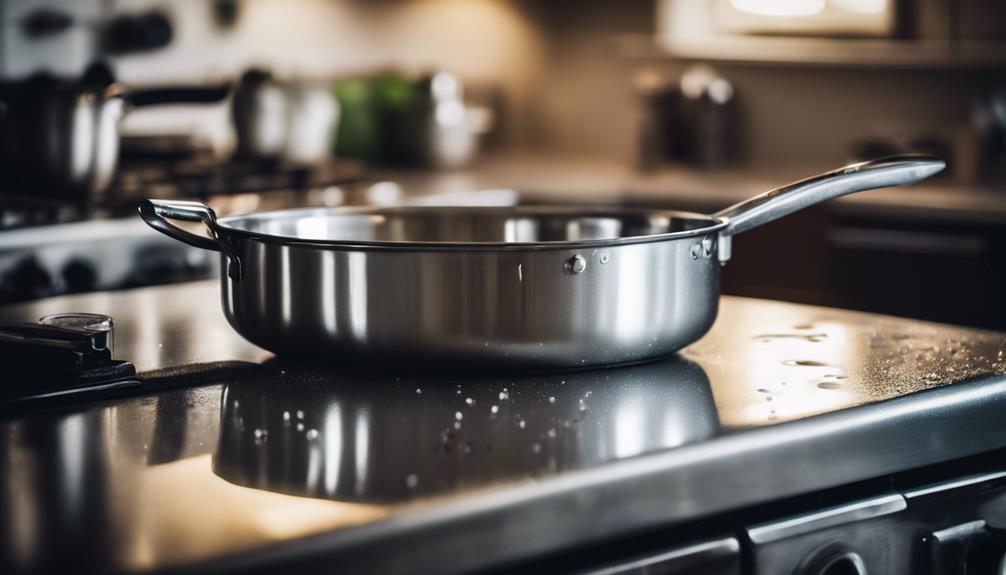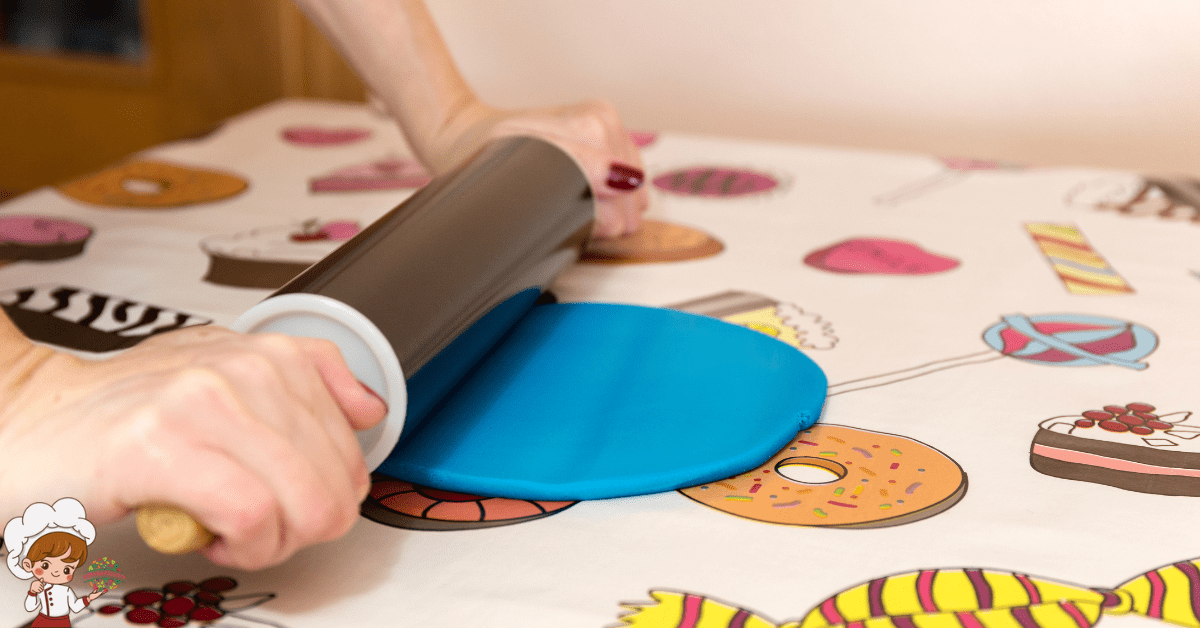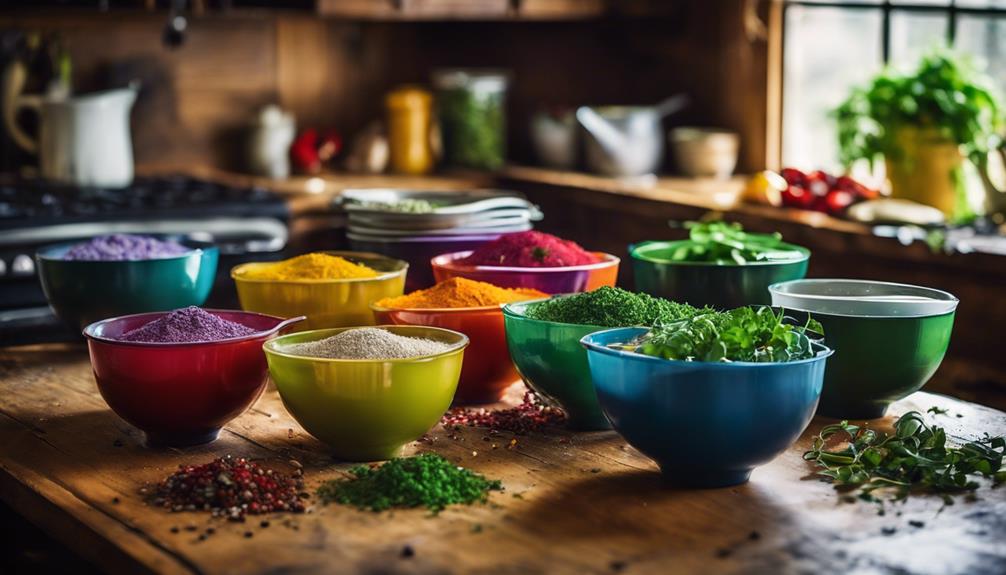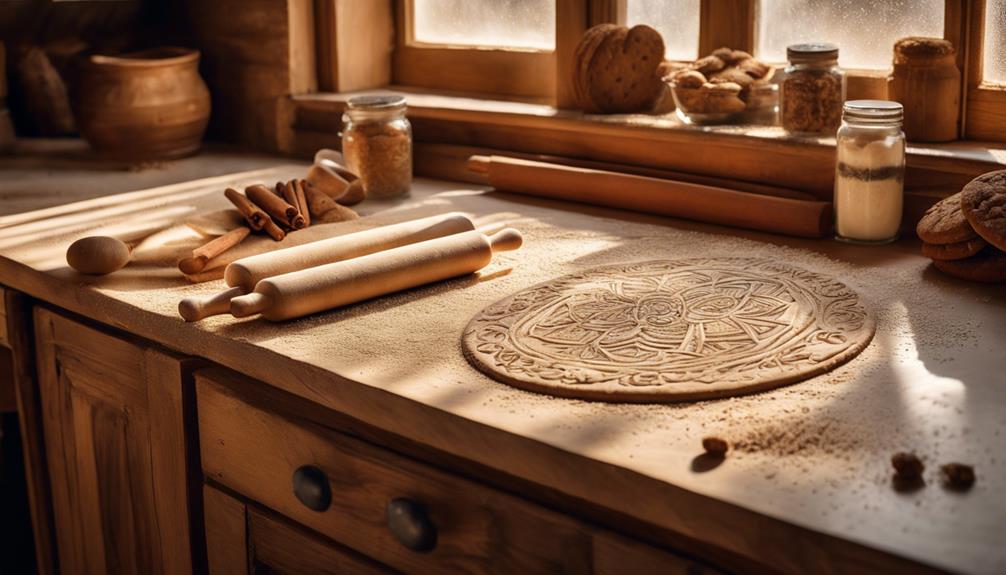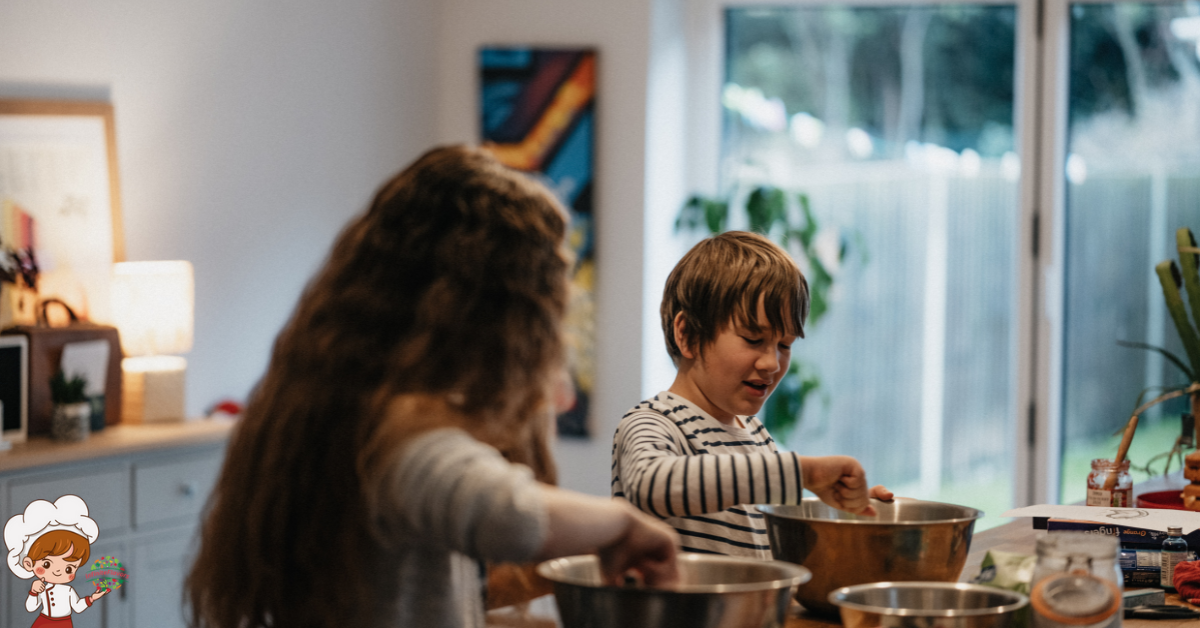Amazing Rolling Pins For Clay And Crafts
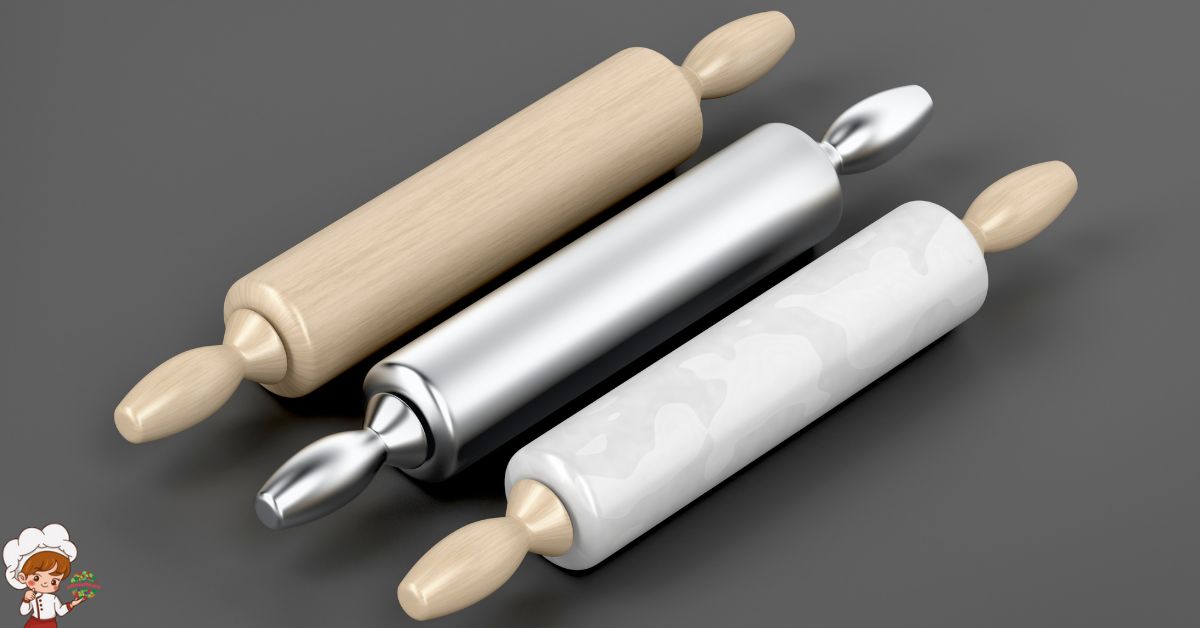
Amazing Rolling Pins For Clay And Crafts; When you’re crafting with clay, rolling pins are indispensable tools that guarantee precision and a smooth finish. You have various options, including wooden, silicone, and marble pins, each offering unique benefits. Size matters, too; longer pins work well for big projects, while shorter ones are perfect for details. If you choose textured pins, you can add interesting designs to your work. Always keep your workspace clean and prevent sticking with a light dusting of cornstarch. With the right rolling pin, your creative possibilities expand immensely. Keep exploring to discover all the exciting ways to enhance your craft experience.
Importance of Rolling Pins
Rolling pins play an essential role in crafting with clay and other materials, making them indispensable tools for both beginners and seasoned artists. Understanding the importance of rolling pins goes beyond their practical uses; it connects you to a rich rolling pin history that spans various cultures and time periods. These tools have evolved over centuries, adapting to the needs of artisans and bakers alike.
When you use a rolling pin, you’re tapping into a tradition that dates back to ancient civilizations. From the simple wooden models of early cultures to the modern silicone variations, these tools have played a significant role in shaping not just dough but also the creative processes in various crafts. Their cultural significance can’t be overstated; in many societies, rolling pins symbolize nourishment, hospitality, and the artistry of food preparation.
In the context of clay and crafts, rolling pins help you achieve uniform thickness and texture, crucial for creating professional-looking pieces. Whether you’re flattening clay for pottery or preparing a surface for intricate designs, a rolling pin guarantees consistency, allowing your creativity to shine through. By incorporating this age-old tool into your craft, you honor its historical significance while enhancing your artistic skills. So, the next time you reach for a rolling pin, remember you’re not just using a tool; you’re participating in a long-standing tradition that connects you to countless artists before you.
Types of Rolling Pins
When it comes to crafting with clay, knowing the different types of rolling pins can greatly enhance your experience. Each type serves a unique purpose, making your crafting process smoother and more enjoyable.
Ceramic rolling pins are popular for their heavy weight and smooth surface, perfect for achieving an even thickness in your clay. If you prefer something flexible, silicone rolling pins are non-stick and easy to clean, making them ideal for various crafting projects. Adjustable rolling pins come with removable rings that help you control the thickness of your clay, ensuring consistency every time.
For smaller projects, mini rolling pins are handy and allow for precise detail work. If you want to add flair to your creations, patterned rolling pins can imprint fun designs onto your clay, giving it a unique touch. Tapered rolling pins, with their narrowing ends, are great for maneuvering around curves and edges.
Non-stick rolling pins make it easy to roll out clay without it sticking to the surface, while vintage rolling pins offer a classic charm and can sometimes be more comfortable to use. Ergonomic rolling pins are designed for comfort, reducing strain on your hands during extended crafting sessions. Finally, if you’re crafting with kids, children’s rolling pins are smaller and easier for little hands to handle.
Knowing these types of rolling pins can help you choose the right one for your next project, making your crafting journey even more enjoyable.
Material Options
When choosing a rolling pin, you’ll want to contemplate the material it’s made from. Wood and plastic offer different benefits, while metal rolling pins can provide unique advantages as well. Plus, specialty materials might surprise you with their functionality and ease of use.
Wood Vs. Plastic
Choosing between wood and plastic for your rolling pin can make a significant difference in your crafting experience. Wood benefits, such as its natural texture, provide excellent grip and control when rolling out clay or dough. The warmth of wood also makes it less likely to stick, allowing for a smoother process. Plus, wood rolling pins can be quite aesthetically pleasing, adding a rustic touch to your workspace.
On the other hand, plastic durability is a major advantage. Plastic rolling pins tend to be lighter and easier to clean, often being dishwasher safe. They resist staining and can handle various materials without warping, making them versatile for different crafting projects. If you’re working with very soft clay or need something that requires less maintenance, a plastic pin might be your best bet.
Ultimately, your choice depends on your crafting style and needs. If you value traditional feel and aesthetics, a wooden pin is perfect. However, if you prioritize durability and ease of use, plastic could be the way to go. Consider your projects, and let that guide your decision!
Metal Rolling Pins
Metal rolling pins offer a sturdy alternative to both wood and plastic, making them a favorite among many crafters. When you consider durability comparison, metal pins stand out—they resist warping and cracking, which can be an issue with wooden versions over time. This durability means you won’t have to replace your metal rolling pin as often, saving you money in the long run.
In addition to their strength, metal rolling pins come in various finishes and designs, enhancing their design aesthetics. Whether you prefer a sleek stainless steel look or a vintage brushed finish, there’s a metal rolling pin to match your crafting style. These options not only serve a functional purpose but also add visual appeal to your crafting space.
Another advantage of metal rolling pins is their weight. Their heft allows you to apply even pressure while rolling out clay, ensuring a consistent thickness. Plus, they often have a smooth surface that makes for easy cleanup, letting you focus on your creative projects. So, if you’re looking for reliability and style, a metal rolling pin could be the perfect addition to your crafting toolkit.
Specialty Materials Overview
Exploring specialty materials for rolling pins can enhance your crafting experience greatly. When choosing a rolling pin, consider options like silicone, wood, or marble, each offering unique benefits. Silicone rolling pins are excellent for clay compatibility, preventing sticking and guaranteeing smooth rolling. Their flexibility makes them easy to clean, which is a major plus for rolling pin care.
Wooden rolling pins are a classic choice. They provide a sturdy feel and can be easily conditioned with oil to maintain their surface. However, you’ll want to check for compatibility with your clay type, as some clays may leave residue or require extra care.
Marble rolling pins are another fantastic option, especially for certain types of clay. Their weight helps in applying even pressure, and they remain cool, which can be beneficial for specific crafting projects. Just be mindful of their care; avoid sudden temperature changes to prevent cracking.
Ultimately, the right specialty material can elevate your crafting game. By considering clay compatibility and taking proper rolling pin care, you’ll guarantee that your tools last and perform beautifully for all your creative endeavors.
Size Considerations
When it comes to crafting with clay, the right size of rolling pin plays an essential role in achieving the desired results. You need to take into account rolling pin dimensions carefully, as they can greatly impact your crafting experience. The ideal length for a rolling pin often depends on the size of the projects you’re working on. If you’re creating larger pieces, a longer rolling pin, generally around 18 inches, can help you roll out the clay evenly without too much effort.
On the other hand, if you’re focusing on smaller projects, a shorter pin, about 10 to 12 inches, may be more manageable. This size allows for better control and precision, especially when you’re working with intricate designs or smaller clay pieces.
Additionally, think about the thickness of the clay you want to achieve. A thicker rolling pin might be equipped with guides to help you maintain an even thickness, making it easier to create uniform slabs.
Remember that your comfort also matters. A rolling pin that feels good in your hands will enhance your crafting experience. If you’re unsure about which size to choose, think about having a couple of different lengths on hand. This way, you can switch between them based on your project needs. Ultimately, the right rolling pin dimensions will not only make your work easier but also elevate the quality of your finished pieces.
Texture and Surface Features
Choosing the right rolling pin involves more than just size; texture and surface features also play a significant role in your crafting process. When you explore texture techniques, you’ll find that the rolling pin’s surface can create unique surface patterns on your clay. Different texture tools can help you achieve various effects, adding depth and interest to your projects.
Imprint methods using textured rolling pins allow you to effortlessly transfer design variations onto your material. By rolling out your clay with a pin that has distinct surface treatments, you can create texture effects that elevate your work from ordinary to extraordinary. Whether you’re looking for a subtle pattern or a bold statement, the right rolling pin can make all the difference.
Incorporating texture applications into your crafting routine enriches your designs and empowers your creativity. You might experiment with different rolling pins, such as those made from wood, acrylic, or silicone, each offering unique textures and effects. For instance, a pin with a carved surface can provide intricate designs, while a smooth one can allow for more detailed imprint methods.
Remember that the texture and surface features of your rolling pin can influence the final look of your project immensely. So, take the time to explore and find the perfect rolling pin that aligns with your artistic vision. With the right choice, you’ll reveal endless possibilities in your clay and craft creations.
Choosing the Right Rolling Pin
When you’re picking a rolling pin, consider the material, size, and weight that best suit your crafting needs. Different materials can affect how the clay rolls out, while the right size and weight can enhance your control and comfort. Let’s break down these factors to help you make the best choice for your projects.
Material Types Explained
While selecting the right rolling pin can seem intimidating, understanding the different material types can simplify your decision. Ceramic rolling pins are excellent for those who prefer a smooth surface and even pressure, making them ideal for intricate crafting techniques. If you’re looking for something lightweight and easy to clean, silicone rolling pins are great portable options that also prevent sticking.
For those interested in creating unique textures, pattern rolling pins add a decorative touch to your projects. If you want versatility, consider adjustable thickness rolling pins, which let you control the thickness of your clay or dough with ease.
Don’t forget about eco-friendly options; bamboo rolling pins are not only sustainable but also durable. These materials cater to both beginners and advanced uses, providing a range of functionalities for every level of crafting expertise.
When it comes to storage solutions, some rolling pins come with built-in storage capabilities or are compact enough to fit in small spaces, making them a practical choice for any workspace. By understanding these material types, you can confidently choose the best rolling pin for your creative endeavors.
Size and Weight Considerations
Understanding material types is just the beginning; size and weight are also key factors in selecting the right rolling pin for your projects. When you consider rolling pin dimensions, think about the thickness and length that best suits your crafting needs. A longer pin allows for greater reach, which is perfect for larger projects, while a shorter pin offers more control for intricate work.
Rolling pin weight plays a significant role in how easily you can roll out your material. A heavier pin provides added pressure, making it easier to flatten thick clay or dough, while a lighter pin gives you more maneuverability for delicate tasks. Striking the right balance between size and weight depends on your personal preferences and the types of projects you tackle.
For instance, if you’re working with soft materials, a lightweight rolling pin might be ideal. Conversely, if you’re dealing with denser substances, a heavier option could save you effort. Ultimately, choosing the right rolling pin dimensions and weight will enhance your crafting experience, ensuring you have the right tool for every creative endeavor.
Texture and Surface Options
Choosing the right texture and surface for your rolling pin can greatly impact your crafting experience. When you’re working with clay or other materials, the texture patterns on your rolling pin can influence how well the material shows detail or maintains its shape. For instance, a pin with a smooth surface finish is perfect for creating fine, even layers, while a textured pin can help imprint unique designs onto your clay.
Consider the type of projects you’re tackling. If you enjoy adding intricate details, a rolling pin with specific texture patterns, like floral or geometric designs, can elevate your work. Conversely, if you’re looking for versatility, a smooth-surfaced rolling pin gives you the flexibility to create both detailed and simple projects.
Additionally, think about the material of your rolling pin. Wooden rolling pins often have a natural finish that provides a good grip, while silicone options offer a non-stick surface ideal for clay. Ultimately, choosing the right texture and surface finishes for your rolling pin can enhance your crafting process, making it more enjoyable and efficient. Remember, the right tools make all the difference!
Techniques for Rolling Clay
When rolling clay, employing the right techniques can make all the difference in achieving a smooth and even surface. Start by guaranteeing your clay consistency is just right; it should be pliable but not too sticky. If your clay feels dry, you can add a few drops of water and knead it until it’s manageable. Conversely, if it’s too wet, let it sit out for a bit to firm up.
Once you have the right consistency, you’ll want to pick your rolling techniques. Begin by flattening the clay with your hands before using your rolling pin. This initial step helps prevent any unevenness. Use even pressure as you roll, applying consistent force from the center outwards. This technique encourages uniform thickness and prevents the edges from becoming too thin.
Additionally, consider using guides to maintain an even thickness. You can place wooden dowels or even clay slabs on either side of your work surface, allowing your rolling pin to glide smoothly over them. This approach will help you achieve the desired thickness every time.
Don’t forget to rotate your clay occasionally as you roll. This simple action prevents it from sticking to the surface and guarantees that all parts receive equal pressure. By mastering these rolling techniques, you’ll find creating your clay projects becomes easier and more enjoyable, leading to better results in your crafting endeavors.
Maintaining Your Rolling Pin
After perfecting your rolling techniques, it’s important to keep your rolling pin in top condition for the best results. Regular maintenance guarantees it lasts longer and performs effectively. Start with cleaning methods; after each use, wipe your rolling pin with a damp cloth to remove any residue. For deeper cleaning, consider using mild soap and warm water, but avoid soaking it to prevent warping.
Storage tips also play an essential role in maintaining your rolling pin. Store it in a dry place, ideally hanging or in a drawer, to avoid any accidental bumps or scratches. You should also be mindful of maintenance frequency; inspect your rolling pin regularly for any signs of wear or damage.
Handling precautions are necessary to prevent chipping or cracking, especially if you’re using it on hard surfaces. Always roll on a soft mat or cutting board to protect both your rolling pin and your work surface.
For longevity practices, consider applying food-safe mineral oil every few months to keep the wood hydrated and prevent it from drying out. If you notice any cracks, don’t fret—there are repair techniques you can use. For minor cracks, apply wood glue and clamp it until it dries.
Creative Uses Beyond Clay
While rolling pins are typically associated with clay and dough, their versatility extends far beyond these traditional uses. You can explore a world of artistic projects by incorporating alternative materials like fabric, paper, or even fondant into your craft routine. With the right rolling techniques, you can achieve smooth surfaces and intricate patterns that elevate your creations.
Consider using your rolling pin for DIY rolling with materials such as polymer clay or handmade paper. This allows you to experiment with texture and thickness, giving you full control over your custom designs. You might also discover unique applications in mixed media art, where layering different creative mediums can lead to stunning results.
Craft collaborations can flourish when you share your rolling pin with friends or fellow crafters. Together, you can initiate texture experiments, pushing the boundaries of what you can create. By rolling over stencils or textured surfaces, you can imprint fascinating designs onto your projects, making each piece truly one-of-a-kind.
Don’t forget that rolling pins can serve as multifunctional tools in your crafting arsenal. Use them to flatten materials, create uniform shapes, or even as a makeshift tool for pressing down embellishments. The possibilities are endless when you think outside the box. So, grab your rolling pin and release your creativity—it’s time to discover the many ways your favorite tool can enhance your craft adventures!
Tips for Beginners
Starting out with rolling pins can be exciting, but it’s essential to grasp some fundamental tips to make the most of your crafting experience. First, familiarize yourself with the basic techniques of rolling out clay or dough. Always start with a clean, flat surface and verify your rolling pin is also clean. It’s a good idea to lightly dust your work area with cornstarch or flour to prevent sticking.
One common mistake beginners make is applying too much pressure while rolling. This can lead to uneven thickness and unwanted shapes. Instead, use gentle, even pressure and keep adjusting your technique as needed. Roll from the center outwards, rotating the clay a quarter turn as you go to maintain an even thickness.
Another tip is to work in small batches. If you’re new to crafting, it’s easier to manage smaller pieces of clay. This allows you to focus on controlling the thickness and texture without feeling overwhelmed. Also, verify your rolling pin size. A heavier pin might be more challenging to control, so consider starting with a lighter option.
Lastly, don’t rush the process. Take your time to practice these techniques, and don’t be afraid to make mistakes. Each project is a learning opportunity, and with patience, you’ll improve your skills. Enjoy your crafting journey, and remember that every expert was once a beginner!
Advanced Techniques for Experts
For seasoned crafters, mastering advanced rolling techniques can elevate your projects to new heights. By incorporating these methods into your workflow, you’ll achieve a level of detail and consistency that truly sets your work apart. One essential technique is the use of adjustable rolling pins. These allow you to control the thickness of your material with precision, ensuring uniformity across your project.
Another key aspect of advanced rolling is the proper application of pressure. By applying even pressure as you roll, you can prevent uneven areas and maintain the integrity of your design. A gentle, consistent motion is vital—too much force can distort your clay or craft material.
Consider using guides, such as wooden dowels, on either side of your rolling area. This can help you roll out your material to a specific thickness while keeping it flat and even. It’s one of the best precision crafting tips you can adopt.
Don’t overlook the importance of temperature, either. Keeping your clay at the right temperature can greatly affect how it rolls out. If it’s too cold, it may crack; if it’s too warm, it might become sticky and unmanageable.
Lastly, practice makes perfect. Experiment with different materials and rolling techniques to find what works best for you. As you refine your skills, you’ll discover that these advanced rolling techniques not only improve your efficiency but also enhance the overall quality of your crafts. Happy crafting!
Eco-Friendly Rolling Pins
In today’s crafting world, choosing eco-friendly rolling pins not only supports your creative endeavors but also contributes to a healthier planet. By opting for rolling pins made from sustainable materials, you’re making a conscious choice that minimizes your ecological footprint. These materials can include bamboo, reclaimed wood, or even recycled plastics, each offering durability and functionality while being kinder to the environment.
When you look for eco-friendly options, keep an eye out for products with eco certifications. These certifications indicate that the materials used have been sourced responsibly and that the manufacturing processes adhere to environmental standards. By selecting rolling pins with such certifications, you’re ensuring that your tools align with your values of sustainability and integrity.
Using eco-friendly rolling pins can also enhance your crafting experience. The natural textures and finishes of sustainable materials can improve your grip and control, leading to better results in your projects. Plus, knowing that you’re using a product that’s gentle on the Earth can add a layer of satisfaction to your creative process.
Transitioning to eco-friendly rolling pins doesn’t mean sacrificing quality or performance. Instead, you’ll discover a world of options that not only meet your crafting needs but also support a more sustainable future. So, the next time you shop for a rolling pin, remember to look for those made from sustainable materials and check for eco certifications. You’ll feel good about the choice you make!
Where to Buy Rolling Pins
When you’re ready to buy a rolling pin, you’ve got plenty of options. Local craft stores often have a great selection, but don’t overlook online retailers for convenience and variety. Specialty art suppliers can also provide unique choices tailored for your specific crafting needs.
Local Craft Stores
Finding the right rolling pin can transform your crafting experience, making it smoother and more enjoyable. Local craft stores are an excellent place to start your search. You’ll often find a variety of rolling pins suited for different projects, whether you’re working with clay or other materials.
These stores frequently host local workshops and community events, allowing you to connect with other crafters and see the latest crafting trends. You might even discover artisan collaborations showcasing unique rolling pins made by local artisans. Attending craft fairs can also lead you to hidden gems that cater specifically to DIY projects.
Additionally, many local craft stores offer crafting classes and skill-sharing sessions, where you can learn about material sourcing and the best tools for your projects. By engaging with knowledgeable staff, you can get tailored recommendations for rolling pins that fit your crafting needs. Plus, you’ll support your community and build connections with fellow crafters. So, visit your nearby craft store, and immerse yourself in the vibrant world of local crafting!
Online Retailers
Shopping online for rolling pins opens up a world of options right at your fingertips. You can explore a vast selection of styles, sizes, and materials without ever leaving your home. Whether you’re looking for a classic wooden pin or a sleek, modern silicone option, online shopping makes it easy to find exactly what you need.
One of the biggest advantages of purchasing rolling pins online is the ability to make retailer comparisons. You can quickly browse multiple websites to find the best prices, read customer reviews, and check return policies. This level of transparency guarantees you’re making an informed decision before clicking “buy.”
Don’t forget to check out popular online marketplaces like Amazon, where you can find a wide range of options and often enjoy fast shipping. Specialty craft retailers also have online stores that cater specifically to crafters like you, offering unique rolling pins that you may not find in local stores.
Before making a purchase, always look for sales or discounts, as many retailers offer promotions that can help you save money. With just a few clicks, you’ll be well on your way to enhancing your crafting experience with the perfect rolling pin.
Specialty Art Suppliers
If you’re looking for rolling pins that offer something a bit more unique or specialized, specialty art suppliers are an excellent option. These stores focus on high-quality crafting supplies and tools that can elevate your projects. You’ll find a variety of rolling pins designed specifically for different artistic techniques.
When choosing a specialty art supplier, consider those that cater to your specific crafting needs. Some suppliers focus on polymer clay, while others may offer tools for baking or other crafts. You’ll discover rolling pins with intricate designs, textured surfaces, and even customizable options that can add a personal touch to your creations.
Visiting local specialty art suppliers can also be a great experience. You can interact with knowledgeable staff who can guide you in selecting the right artistic tools for your projects. Plus, you’ll have the chance to see and feel the products before you buy, ensuring you make the best choice.
In short, if you’re after rolling pins that stand out, specialty art suppliers provide a treasure trove of options designed for creativity. Don’t hesitate to explore your local shops or their online counterparts for a wider selection!
Frequently Asked Questions: Amazing Rolling Pins For Clay And Crafts
Can I Use a Kitchen Rolling Pin for Clay Projects?
You can definitely use a kitchen rolling pin for clay projects. Just remember to clean it thoroughly afterward. Experimenting with different kitchen tools can enhance your clay techniques and make your projects more enjoyable and creative!
How Do I Clean My Rolling Pin After Use?
To clean your rolling pin, use gentle cleaning techniques like warm soapy water for wood or damp cloths for silicone. Always consider the material, as some may require specific care to maintain their quality and durability.
Are There Rolling Pins Specifically Designed for Children?
Yes, there are rolling pins specifically designed for children. These often feature child-friendly designs and safe materials, ensuring a fun and safe crafting experience. Look for options tailored to younger hands and creative projects.
What Is the Best Way to Store My Rolling Pin?
To store your rolling pin, choose a cool, dry place. Depending on rolling pin materials, you might wrap it in a cloth. For rolling pin sizes, make certain it fits comfortably in your storage area.
Can I Customize My Rolling Pin With Designs?
Absolutely, you can customize your rolling pin with designs! Using design transfer methods or engraving techniques, you can create unique patterns that add a personal touch, making your rolling pin truly one-of-a-kind for your projects.
Conclusion
In your crafting journey, choosing the right rolling pin can make all the difference. Whether you’re a beginner or an expert, understanding the various types, materials, and techniques will enhance your experience. Don’t forget to contemplate eco-friendly options that align with your values. With the right tools in hand, you’ll create beautiful pieces with ease. So, grab that rolling pin and let your creativity roll! Happy crafting!



